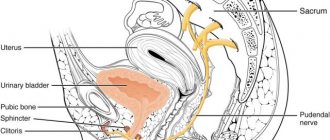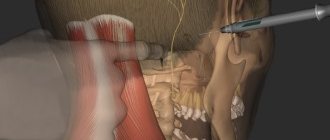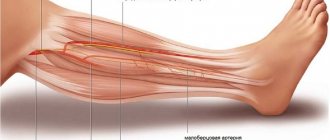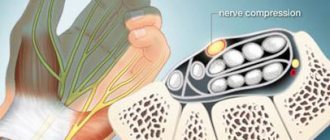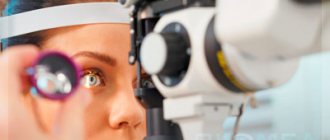According to Orphanet, the European Rare Disease Database pudendal neuralgia affects 4% of patients presenting for consultation for pelvic pain, of whom 30% are men and 70% are women, mostly aged 50 to 70 years.
The pudendal nerve is a nerve of the sensory, motor and autonomic nervous system that emerges from the sacral roots and then travels to the pelvis, giving off its three terminal branches: the spinal nerve of the penis or clitoris, the inferior rectal nerve and the perineal nerve.
Because of its anatomical path, this nerve can be easily compressed by surrounding structures such as the pelvic ligaments, and it is this compression that causes painful symptoms.
Chronic pelvic pain in women
Pelvic pain (pain in the lower abdomen, sometimes in the sacrum, rectum, vagina) can be of a different nature.
First of all, pain can be acute or chronic. The causes of these two types of pain are significantly different, which means that the treatment is also different. Acute pain is a sudden onset of severe pain that lasts several hours or days. Acute pain may be accompanied by fever, nausea, vomiting, intestinal problems, severe weakness and malaise. In cases of acute pain, especially in combination with the complaints described above, it is necessary to urgently consult a doctor - this is how acute surgical diseases often manifest themselves (for example, appendicitis, cholecystitis, intestinal obstruction and others). Acute pain manifests itself in almost any inflammatory disease of the uterus and appendages, ectopic pregnancy, torsion or rupture of an ovarian cyst, cystitis and pyelonephritis (inflammation of the bladder and/or kidneys), enteritis and colitis (inflammation of the intestines), as well as a number of other conditions requiring immediate help .
Treatment of pelvic neuralgia
Treatment of pelvic neuralgia in women and men should begin by eliminating the potential cause of the development of this disease. For example, if damage to the nerve fiber is observed at the level of the roots during the development of degenerative dystrophic disease of the intervertebral discs, then several manual traction procedures are first recommended. This allows you to eliminate compression from the root nerves and relieve the patient from pain. Then a course of treatment is developed aimed at restoring the structure of damaged cartilage tissue. This is often enough to completely restore all pelvic nerves.
If the disease is caused by biochemical changes and metabolic disorders, including a total deficiency of microelements and vitamins, then it is necessary to work with this cause. The doctor will develop a complete diet for the patient and give recommendations on the selection of vitamin and mineral complexes. In parallel, an individual course of treatment will be carried out aimed at restoring the trophism of the nerve fiber that has undergone degeneration.
A course of treatment is developed in a similar way for other types of lesions. In particular, treatment of pelvic neuralgia caused by inflammatory processes in the pelvic cavity begins with relief of the underlying disease. This may require consultation with a gynecologist or urologist. Once the inflammatory swelling is eliminated, a chiropractor or neurologist will be able to develop an effective course for restoring innervation. This helps prevent future problems with innervation and blood supply.
If you need safe and effective treatment for pelvic neuralgia, we invite you to a free appointment with a neurologist at our manual therapy clinic. You can sign up right now. To do this, fill out the doctor appointment form located further on the page. Our administrator will contact you and agree on a convenient time for the visit.
Symptoms of chronic pelvic pain
The symptom of chronic pelvic pain is understood as periodically recurring or constant pain in the lower abdomen (in the sacrum, rectum, vagina) for several months or even years. The causes of chronic pelvic pain differ significantly from the causes of acute pain, which is why they are identified as a separate concept. Chronic pelvic pain is extremely common - affecting every sixth woman. Pain is relatively rarely caused by any one cause, but more often by a combination of various factors. Therefore, diagnostic and therapeutic methods are very diverse. There are also cases when obvious causes of pain cannot be identified, but even for such cases a specific treatment strategy has been developed, which requires mutual understanding and cooperation between the doctor and the patient.
Examination in Samara for patients with pain on the inside of the knee
In most cases, it is advisable to conduct an EMG examination. Pinching of the sphenoid nerve may occur after vigorous movement rather than at rest. In this case, any examination other than an objective one will be useless. An objective/physical examination involves performing a rolling test on the inside of the knee in the area supplied by the sphenoid nerve. Patients with sphenoid neuralgia exhibit hyperalgesia.
What are the causes of chronic pelvic pain?
Pain in the lower abdomen can be a symptom of completely different diseases. Not all of them are gynecological. In some cases, consultation and examination with other specialists is required: urologists, neurologists, gastroenterologists, proctologists, psychologists and psychotherapists. The diagnostic search begins from the initial diagnosis - chronic pelvic pain - and develops towards a specific diagnosis (Table
| Chronic pelvic pain | Gynecological pain | Endometriosis |
| Features of the anatomical structure of the genital organs, hormonal imbalances | ||
| Vulvodynia (pain in the perineum and vaginal opening) | ||
| Chronic inflammation of the genital organs | ||
| Formations (benign and malignant) of the uterus and ovaries | ||
| Prolapse of the uterus and vaginal walls (pelvic organ prolapse) | ||
| Urological pain | Interstitial cystitis | |
| Urinary tract infections | ||
| Urolithiasis disease | ||
| Bladder tumors | ||
| Adhesive disease | Consequences of operations, injuries, infections | |
| Proctological (intestinal) pain | Anal fissure, hemorrhoids, proctitis | |
| Irritable bowel syndrome | ||
| Intestinal tumors | ||
| Neurological pain | Radiculitis, neuritis, intervertebral disc herniation | |
| Entry of a nerve into a surgical suture after surgery on the pelvic organs and anterior abdominal wall | ||
| Vascular pain | Varicose veins of the pelvis, venous congestion | |
| Musculoskeletal pain | Diseases of the joints, muscles, skeletal system | |
| Muscle spasm (dysfunction) of the pelvic floor | ||
| Psychological and psychiatric reasons | Depression, history of violence |
Why is this happening?
There is evidence that risk factors for compression of the pudendal nerve are:
- Chronic microtraumas (non-systematic exercise according to the principle: “it’s better rarely, but wear it out.” This includes cycling, exercise in the gym, team sports).
- Hormonal disorders (diabetes mellitus, hypothyroidism, etc.)
- Systemic connective tissue diseases (collagenosis, etc.)
- Chronic intoxication (alcohol)
- Genetic predisposition
- Congenital anatomical features of the pelvis
How do you find out the cause of pain? Diagnostics
A diagnostic search for the causes of pelvic pain is impossible without a thorough analysis of the woman’s complaints and medical history . Everything is important here: the nature (pulling, cutting, pressing, etc.) and localization of pain (in the middle, right, left, in the sacrum, rectum, bladder), its duration, in case of unstable pain - the frequency of its occurrence, connection with provoking factors (movement, body position, diet, urination, sexual contact).
the menstrual cycle (during menstruation, after, between menstruation, before it) and data on previous pregnancies or concomitant infertility is extremely important . Clarification of this connection often provides the key to understanding the causes of the disease. In addition, the doctor must know everything about the characteristics of the menstrual cycle and sex life of a woman, as well as about any sexually transmitted diseases and vaginal discharge.
Since pain is often associated with other organs, the doctor should ask in detail about the function of the intestines and urinary organs, concomitant diseases of the musculoskeletal system, and previous operations.
A general and gynecological examination is required . Already at this stage, it is possible to exclude the possibility of a major pelvic pathology (tumor), as well as establish the localization of painful sensations.
Based on the survey and examination, the doctor will be able to identify some types of pain syndromes, which significantly narrows and facilitates the further search for the cause. These syndromes include:
- Dyspareunia - painful sexual intercourse
- (Algo)dysmenorrhea - painful menstruation
- Ovulatory pain is cyclical pain in the middle of the menstrual cycle associated with ovulation.
- Pain in the vagina, external genitalia, and perineum (may be associated with infection, tumor, neuropathy, vulvodynia)
- Painful bladder (causes: infectious process, interstitial cystitis, bladder stones and tumors, consequences of previous surgeries)
- Pain associated with filling and bowel movement
- Neuropathies of the sciatic and pudendal nerves
Additional research.
The doctor takes vaginal and cervical discharge for analysis to rule out the possibility of an infectious disease. It is recommended to conduct a cytological examination of a scraping from the cervix. An ultrasound examination of the pelvic organs is always performed In some cases (suspicion of endometriosis of the recto-vaginal septum, retroperitoneal tumors, suspicion of pathology of the pelvic lymph nodes), magnetic resonance imaging .
Most patients with pelvic pain require diagnostic laparoscopy. Laparoscopy is the most useful minimally invasive examination method, allowing direct examination of the pelvic organs and the entire abdominal cavity. Laparoscopy is the only reliable method for identifying foci of endometriosis in the peritoneum, as well as adhesions. If during a laparoscopic examination formations of the appendages, foci of endometriosis, and adhesions are detected, then during the same intervention they are surgically treated. That is why laparoscopy is an indispensable research method and the first (and sometimes sufficient) method of treating identified diseases.
If corresponding diseases of related organs are suspected, examination and treatment is carried out by a urologist, gastroenterologist, proctologist, neurologist, or psychotherapist. Accordingly, depending on the expected diagnosis, the doctor will prescribe an additional examination.
Diagnosis of pudendal nerve neuropathy
Today, there are clinical criteria that suggest pudendal neuropathy. We are talking about the Nantes criteria. Answer yourself the question whether you have these clinical symptoms.
- Pain in the area of innervation of the pudendal nerve: from the anus to the clitoris/head of the penis.
- The pain is felt worse when sitting.
- The pain does not cause awakenings at night.
- The pain is not accompanied by a decrease in tactile sensitivity.
Additional criteria:
- The pain is burning, shooting, stabbing, and may be accompanied by slight numbness.
- The pain worsens during the day and subsides after sleep.
- Mostly the pain appears on one side.
- Pain may be triggered by defecation.
If you notice that you have these symptoms, you should immediately consult a doctor.
Already at the initial appointment, the doctor will be able to conduct additional special manual tests.
Only a urologist specializing in the treatment of pelvic dysfunction should perform a manual examination (both in a gynecological chair and on a couch). This is due to the need to thoroughly and carefully examine the areas most susceptible to compression. An insufficiently complete examination is fraught with the loss of valuable diagnostic information, incorrect interpretation of symptoms and low effectiveness of treatment.
The next step is to conduct electrophysiological studies,
for example, assessing the bulbocavernosus reflex using electromyography.
All possible diagnostic methods are carried out at the Expert Urogynecology Clinic by highly qualified specialists in the field of pelvic floor pathology. Differential diagnosis is carried out with lesions of other pelvic nerves, as well as with myofascial syndrome. The latter is characterized by painful sensations when pressing on various trigger points in the muscles.
| anonymously to the doctor, through the feedback form, we will try to help you. | Ask a Question |
Symptoms of inflammation of the sciatic nerve
Pain, which can even occur due to lifting a heavy bag or hypothermia, night attacks are the main indicator of sciatica. In addition to the sharp shooting pain syndrome, doctors advise paying attention to:
- “pins and needles” and numbness from the buttocks and below;
- constipation, urinary incontinence;
- weakness and gradual muscle atrophy, limping.
When a person moves or stands for a long time, pain is more disturbing. During attacks, redness of the skin, swelling, chills, and sweating are quite possible. At first, the pain syndrome is not very expressive, but gradually becomes so strong that there is a danger of loss of consciousness. It almost hurts for a person to breathe. If the disease is not treated, the entire leg will suffer: it will become cold, bending and unbending it will be problematic, and then the ability to move the foot and toes will be lost.
Our specialists
Tarasova Svetlana Vitalievna
Expert No. 1 in the treatment of headaches and migraines. Head of the Center for the Treatment of Pain and Multiple Sclerosis.
Somnologist.
Epileptologist. Botulinum therapist. The doctor is a neurologist of the highest category. Physiotherapist. Doctor of Medical Sciences.
Experience: 23 years.Derevianko Leonid Sergeevich
Head of the Center for Diagnostics and Treatment of Sleep Disorders.
The doctor is a neurologist of the highest category. Vertebrologist. Somnologist. Epileptologist. Botulinum therapist. Physiotherapist. Experience: 23 years.
Palagin Maxim Anatolievich
The doctor is a neurologist. Somnologist. Epileptologist. Botulinum therapist. Physiotherapist. Experience: 6 years.
Zhuravleva Nadezhda Vladimirovna
Head of the center for diagnosis and treatment of myasthenia gravis.
The doctor is a neurologist of the highest category. Physiotherapist. Experience: 16 years.
Mizonov Sergey Vladimirovich
The doctor is a neurologist. Chiropractor. Osteopath. Physiotherapist. Experience: 8 years.
Bezgina Elena Vladimirovna
The doctor is a neurologist of the highest category. Botulinum therapist. Physiotherapist. Experience: 24 years.
Drozdova Lyubov Vladimirovna
The doctor is a neurologist. Vertebroneurologist. Ozone therapist. Physiotherapist. Experience: 17 years.
Dyachenko Ksenia Vasilievna
Head of the center for the treatment of dizziness and balance disorders.
The doctor is a neurologist of the highest category.
Angioneurologist. Neurorehabilitation specialist. Physiotherapist. Candidate of Medical Sciences.
Experience: 19 years.Volkova Svetlana Anatolevna
Head of the Center for Parkinsonism and Extrapyramidal Diseases.
The doctor is a neurologist of the highest category. Epileptologist. Ozone therapist. Physiotherapist. Experience: 26 years.
Polivanova Yulia Vyacheslavovna
The doctor is a neurologist. Ozone therapist. Physiotherapist Experience: 8 years.
Yushina Maria Alexandrovna
Head of the Center for Epilepsy and Paroxysmal Conditions.
The doctor is a neurologist. Epileptologist. Ozone therapist. Physiotherapist Experience: 7 years.
Ogurtsov Denis Alexandrovich
Traumatologist - orthopedist of the highest category. Candidate of Medical Sciences.
Experience: 23 years.
Read also
Contracture
A fairly powerful word to hear, denoting the lack of full range of motion in a joint.
The most common causes are prolonged immobilization of the joint. This is possible when after… Read more
Periarthrosis or periarthritis?
Let's imagine that you are driving a luxury car along our wonderful roads and suddenly notice that something persistently creaks in the area of the front wheel on the right. Moreover, this creaking intensifies periodically...
More details
Chest pain
The first thing a patient thinks about when he feels chest pain is a heart attack. Of course, chest pain is not something that can be ignored. But you need to understand that chest pain is not...
More details
Patellar tendinopathy
Patellar tendinopathy is pain in the knee joints and patella. This painful condition often occurs in young people involved in sports. Tendinopathy occurs due to excessive stress...
More details
Pain in the gluteal region
Clinical manifestation of pain in the gluteal region Pain in the gluteal region is quite common. Although this pain can be caused by a number of reasons, it is most often associated with thoracolumbar syndrome,...
More details
general description
The hip joint, one of the largest joints in the human body, connects the head of the femur to the acetabulum of the pelvis.
Together with the muscles and ligaments, it helps to carry out complex movements in the lower limb and ensures upright posture. In a healthy person, the head of the femur has a spherical shape, and all surfaces that make up the joint are covered with smooth cartilage tissue. Intra-articular (synovial) fluid fills the joint cavity, reducing friction between the articular surfaces, supplying the cartilage tissue with nutrients and further cushioning the load.
Myofascial pain syndrome (MPS)
Quite often, the source of pelvic pain is the muscles and ligaments. This condition is called myofascial pain syndrome and has the following causes:
- muscle and ligament sprains;
- bruises;
- frequent minor muscle injuries, for example, during heavy physical work or sports;
- overstrain of the pelvic muscles, when you have to maintain an uncomfortable position for a long time;
- Sometimes the cause is hypothermia and frequent stress.
There can be many causes of pelvic pain. Sometimes it is difficult for a doctor to determine the cause of this condition without additional examinations. If you are worried about pelvic pain, make an appointment with a gynecologist at ProfMedLab, our phone number: +7 (495) 120-08-07.
Need more interesting articles:
13 reasons to get tested for hormones 02/08/2017
Working night shifts increases the risk of developing breast cancer 07/08/2019
Why is it good to cry? 05/19/2017
Sexually transmitted infections
Characteristic signs of sexually transmitted infections (STIs): pain during urination, vaginal discharge, vaginal bleeding between periods. The most common types of STIs are gonorrhea and chlamydia. The final diagnosis can be made by a doctor after laboratory tests. If you are diagnosed with a sexually transmitted disease, your partner should also be tested.
Pinching symptoms
Doctors consider several syndromes that indicate that the patient has a pinched nerve.
- Lesera – straight leg does not rise;
- Sikara – pain intensifies if a person bends the foot;
- landing - it is impossible to take a sitting position yourself.
It hurts to walk and squat, but if you lie down or sit with your legs spread wide apart, it goes away. Signs of inflammation and pinching of the sciatic nerve are quite expressive, but they can still be confused with other diseases:
- spondylitis;
- myeloma;
- ankylosing spondylitis;
- phlebothrombosis;
- arterial insufficiency.

